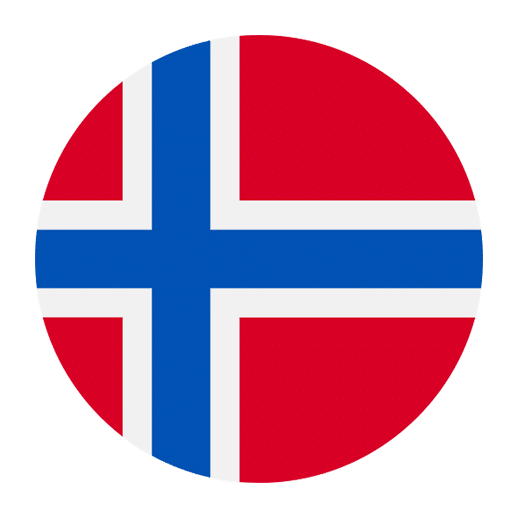Learning a new language can be an exciting and fulfilling journey, especially when it comes to mastering everyday vocabulary. When you start learning Norwegian, one of the most practical areas to focus on is the vocabulary for everyday objects and furniture. These are words you’ll use constantly, whether you’re describing your home, shopping for new items, or simply trying to understand conversations about daily life. In this article, we’ll explore a wide range of Norwegian words for everyday objects and furniture, helping you build a strong foundation in your language learning journey.
Living Room Vocabulary
The living room, or “stue” in Norwegian, is a central area in most homes where people relax and entertain guests. Knowing the names of common items in the living room can be incredibly useful. Here are some essential words:
– Sofa – Sofa
– Lenestol – Armchair
– Bord – Table
– Sofabord – Coffee table
– Bokhylle – Bookshelf
– TV – TV
– Fjernkontroll – Remote control
– Lampe – Lamp
– Tepp – Rug
These basic terms will help you describe your living space and understand conversations about home interiors.
Additional Living Room Items
Once you’re comfortable with the basics, you can expand your vocabulary to include more specific items found in the living room:
– Putetrekk – Pillowcase
– Gardiner – Curtains
– Veggklokke – Wall clock
– Vase – Vase
– Bilde – Picture (as in a framed photo or artwork)
– Peis – Fireplace
– Magasinhylle – Magazine rack
By learning these words, you’ll be able to describe your living room in greater detail and engage in more nuanced conversations about home decor.
Kitchen Vocabulary
The kitchen, or “kjøkken” in Norwegian, is another area where specific vocabulary is essential. Here are some common kitchen items:
– Kjøleskap – Refrigerator
– Komfyr – Stove
– Stekeovn – Oven
– Oppvaskmaskin – Dishwasher
– Vask – Sink
– Kniv – Knife
– Gaffel – Fork
– Skje – Spoon
– Tallerken – Plate
– Skål – Bowl
– Kopp – Cup
– Glass – Glass
Knowing these terms will help you navigate the kitchen, whether you’re cooking, cleaning, or setting the table.
Additional Kitchen Items
To further enhance your kitchen vocabulary, consider learning these additional words:
– Mikrobølgeovn – Microwave
– Brødrister – Toaster
– Kaffetrakter – Coffee maker
– Vannkoker – Kettle
– Skjærefjøl – Cutting board
– Visp – Whisk
– Rivjern – Grater
– Stekepanne – Frying pan
– Kjele – Pot
– Gryte – Casserole dish
– Bollesett – Mixing bowls
These additional words will allow you to talk about kitchen tasks and equipment with greater precision.
Bedroom Vocabulary
The bedroom, or “soverom” in Norwegian, is another important area to know. Here are some basic bedroom items:
– Seng – Bed
– Hodepute – Pillow
– Dyne – Duvet
– Sengetøy – Bed linen
– Kommode – Dresser
– Garderobe – Wardrobe
– Nattbord – Nightstand
– Speil – Mirror
– Vekkerklokke – Alarm clock
These words will help you describe your sleeping area and discuss bedroom furnishings.
Additional Bedroom Items
For a more comprehensive understanding of bedroom vocabulary, consider learning these additional terms:
– Sengeteppe – Bedspread
– Skap – Closet
– Klesstativ – Clothes rack
– Stol – Chair
– Skrivebord – Desk
– Bordlampe – Desk lamp
– Putetrekk – Pillowcase
– Sengetøysett – Bedding set
– Gardin – Curtain
– Skittentøyskurv – Laundry basket
These additional words will allow you to describe your bedroom in greater detail and discuss various aspects of bedroom organization and decor.
Bathroom Vocabulary
The bathroom, or “bad” in Norwegian, is another essential area to know. Here are some common bathroom items:
– Dusj – Shower
– Badekar – Bathtub
– Toalett – Toilet
– Håndvask – Sink
– Speil – Mirror
– Håndkle – Towel
– Tannbørste – Toothbrush
– Tannkrem – Toothpaste
– Sjampo – Shampoo
– Balsam – Conditioner
– Såpe – Soap
These words will help you navigate the bathroom and discuss personal hygiene and grooming routines.
Additional Bathroom Items
To expand your bathroom vocabulary, consider learning these additional terms:
– Dusjforheng – Shower curtain
– Badematte – Bath mat
– Toalettpapir – Toilet paper
– Hårføner – Hairdryer
– Barberhøvel – Razor
– Barberskum – Shaving cream
– Krem – Cream
– Deodorant – Deodorant
– Vaskemaskin – Washing machine
– Tørketrommel – Dryer
These additional words will allow you to discuss bathroom items and routines with greater precision.
General Household Vocabulary
In addition to specific rooms, it’s useful to know the names of general household items that can be found throughout the home. Here are some common terms:
– Nøkkel – Key
– Dør – Door
– Vindu – Window
– Gulv – Floor
– Tak – Ceiling
– Vegg – Wall
– Trapp – Stairs
– Heis – Elevator
– Postkasse – Mailbox
– Skap – Cabinet
These words will help you describe various parts of your home and discuss household items.
Additional General Household Items
To further enhance your general household vocabulary, consider learning these additional terms:
– Støvsuger – Vacuum cleaner
– Feiekost – Broom
– Støvkost – Duster
– Vaskemiddel – Detergent
– Skurebørste – Scrub brush
– Søppelbøtte – Trash can
– Resirkuleringsbeholder – Recycling bin
– Strømpebånd – Power strip
– Strømadapter – Power adapter
– Ladeledning – Charging cable
These additional words will help you discuss household chores, cleaning supplies, and general home maintenance.
Practice Makes Perfect
Learning a new language involves more than just memorizing vocabulary; it requires practice and real-life application. Here are a few tips to help you integrate these Norwegian words for everyday objects and furniture into your daily routine:
1. **Label Items in Your Home**: Place labels on items in your home with their Norwegian names. This constant visual reminder will reinforce your learning and help you remember the words more easily.
2. **Use Flashcards**: Create flashcards with the English word on one side and the Norwegian word on the other. Review them regularly to test your knowledge and reinforce your memory.
3. **Practice with a Partner**: If you have a language partner or tutor, practice describing your home and its contents in Norwegian. This will help you get comfortable using the vocabulary in conversation.
4. **Engage with Norwegian Media**: Watch Norwegian TV shows, movies, or YouTube videos that focus on home improvement, cooking, or interior design. This exposure will help you hear the vocabulary in context and improve your listening skills.
5. **Keep a Vocabulary Journal**: Write down new words as you learn them and review your journal regularly. This will help you track your progress and reinforce your learning.
6. **Use Language Apps**: Language learning apps like Duolingo, Babbel, or Memrise often have sections focused on everyday vocabulary. Use these tools to supplement your learning and practice on the go.
By integrating these strategies into your language learning routine, you’ll be able to master Norwegian words for everyday objects and furniture more effectively.
Conclusion
Building a strong vocabulary for everyday objects and furniture is a crucial step in learning Norwegian. These words are essential for daily communication and will help you describe your living space, navigate household tasks, and engage in conversations about home life. By focusing on the vocabulary for different rooms and using practical strategies to reinforce your learning, you’ll be well on your way to becoming proficient in Norwegian. Happy learning!

